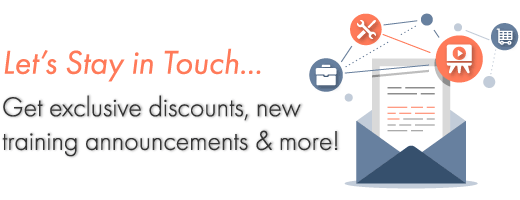When Stress is Contagious: How the Nervous System Shapes Our Interactions
Free exercise to transform relationships, one pause at a time

Ever had a conversation spiral out of control before you could stop it? A simple disagreement turns into a full-blown argument, or a tense exchange leaves you drained.
This isn’t just miscommunication—it’s our neurobiology at work.
Our nervous systems are always in conversation with each other. When someone we’re interacting with becomes stressed, defensive, or overwhelmed, our mind-body system—especially our internal guardian Amy (the amygdala)—picks up on their cues and responds instinctively. In fact, we have specialized neurons called mirror neurons whose job is to reflect the emotional states of others.
This is why stress and emotional intensity are so contagious in relationships. One person’s nervous system activation can quickly trigger another’s, and if we’re outside our resilient zone, moments of connection can turn into conflict in seconds.
The good news? We don’t have to stay stuck in those reactive cycles. By learning to partner with our nervous system, we create space to understand our reactions instead of being ruled by them. This empowers us to intentionally shape the kinds of interactions we want to experience—with presence, care, and mindful intention.
By using Push-Pause, we can disrupt reactive patterns and create a pathway toward healthier, more intentional interactions—whether in couples therapy, family conversations, group settings, or everyday relationships.
Sometimes emotions arise before we have words for them. The practice offers a moment of self-connection and regulation—without the pressure to immediately disclose or resolve anything.
Ready to deepen your practice or help your clients create more intentional engagement in their relationships? Download the free Push-Pause Guide here.
This isn’t just miscommunication—it’s our neurobiology at work.
Our nervous systems are always in conversation with each other. When someone we’re interacting with becomes stressed, defensive, or overwhelmed, our mind-body system—especially our internal guardian Amy (the amygdala)—picks up on their cues and responds instinctively. In fact, we have specialized neurons called mirror neurons whose job is to reflect the emotional states of others.
This is why stress and emotional intensity are so contagious in relationships. One person’s nervous system activation can quickly trigger another’s, and if we’re outside our resilient zone, moments of connection can turn into conflict in seconds.
The good news? We don’t have to stay stuck in those reactive cycles. By learning to partner with our nervous system, we create space to understand our reactions instead of being ruled by them. This empowers us to intentionally shape the kinds of interactions we want to experience—with presence, care, and mindful intention.
By using Push-Pause, we can disrupt reactive patterns and create a pathway toward healthier, more intentional interactions—whether in couples therapy, family conversations, group settings, or everyday relationships.
How to Use Push-Pause in Relationships
1. Notice When Emotional Activation Rises
If you or someone else feels overwhelmed, defensive, or shut down, it’s time to push pause.2. Say It Out Loud (or Internally)
This can be as simple as:- “I need a second to gather my thoughts.”
- “Can we take a breath before continuing?”
- “I need to Push Pause for a moment.”
3. No Pressure to Explain
One of the most powerful aspects of Push-Pause is that you don’t have to explain why you’re pausing.Sometimes emotions arise before we have words for them. The practice offers a moment of self-connection and regulation—without the pressure to immediately disclose or resolve anything.
4. Use a Regulation Tool to Reset
Once you’ve pushed pause, use a brain-calming technique to settle your nervous system:- CPR for the Amygdala® – Gentle touch-based self-soothing.
- Sigh Breath with Mindful Touch – A deep exhale paired with grounding touch.
- Color and Breath Titration Exercise – Using breath and visual focus to regulate emotions.
- Mindful Grounding with Distractions – Redirecting attention to shift out of reactivity.
5. Reconnect When Ready
Once both people feel regulated, check in before continuing:- “Do we feel ready to continue?”
- “What do we need to move forward productively?”
- “How can we approach this conversation differently?”
Why It Works: The Science of Relational Regulation
When we pause in relationships, we:- Interrupt stress contagion and stop escalation.
- Create space for clarity and intentionality in communication.
- Model emotional regulation for those around us.
Try It Today: The Push-Pause Challenge
For the next week, practice pushing pause in at least one relationship interaction per day—whether with a partner, friend, colleague, or client.- Notice emotional activation.
- Push Pause and take a breath.
- Use a simple grounding tool.
- Check in: Am I responding or reacting?
- Re-engage with clarity.
Ready to deepen your practice or help your clients create more intentional engagement in their relationships? Download the free Push-Pause Guide here.
Healing in Your Hands

The power to heal the wounds of your past, create your present, and build your future is in your own hands.
Written by Dr. Kate Truitt, a psychologist, neuroscientist, and trauma expert, Healing in Your Hands is the first book of its kind to integrate the neuroscience of trauma with cutting-edge research on self-havening – a groundbreaking technique that draws on the power of mindful touch to heal even the most profound traumatic stress. It weaves together powerful client stories, insights from the field of neuroscience, and personalized havening practices to create a complete self-healing program that anyone can use.
Written by Dr. Kate Truitt, a psychologist, neuroscientist, and trauma expert, Healing in Your Hands is the first book of its kind to integrate the neuroscience of trauma with cutting-edge research on self-havening – a groundbreaking technique that draws on the power of mindful touch to heal even the most profound traumatic stress. It weaves together powerful client stories, insights from the field of neuroscience, and personalized havening practices to create a complete self-healing program that anyone can use.
Keep Breathing

In Keep Breathing, Dr. Kate Truitt, a renowned psychologist, applied neuroscientist, and trauma expert, shares her story of unimaginable loss, trauma, and ultimately, healing. Faced with the sudden-gut wrenching death of her fianće just one week before their wedding day, Kate found her world shattered, catapulting her into a deep void of profound grief, trauma, shock, and guilt.
Part memoir and part scientific exploration, Keep Breathing uses Kate’s own account as a case study to illuminate the common experiences in our human brain – deep love and devasting loss, exhilaration and pain, life and death – that have the power to both derail our lives and ignite us to rebuild, heal, and grow. Her deeply personal loss sheds light on the human spirit’s extraordinary ability to persevere and thrive in the face of suffering – providing readers with a roadmap to navigate their own paths to healing and self-discovery. With its raw yet warm candor, Kate’s brave storytelling exemplifies what it means to truly come back to ourselves.
Part memoir and part scientific exploration, Keep Breathing uses Kate’s own account as a case study to illuminate the common experiences in our human brain – deep love and devasting loss, exhilaration and pain, life and death – that have the power to both derail our lives and ignite us to rebuild, heal, and grow. Her deeply personal loss sheds light on the human spirit’s extraordinary ability to persevere and thrive in the face of suffering – providing readers with a roadmap to navigate their own paths to healing and self-discovery. With its raw yet warm candor, Kate’s brave storytelling exemplifies what it means to truly come back to ourselves.
Meet the Expert:
Dr. Kate Truitt, a clinical psychologist, applied neuroscientist, and international bestselling author, is an expert in trauma, stress, and resilience. She is the founder of the educational platform Truitt Institute and leads her award-winning clinical team at Dr. Kate Truitt & Associates. As a member of the Goldie Hawn Foundation’s MindUP Scientific Advisory Committee and a co-Developer of the Havening Techniques®, as well as an expert contributor to the Kevin Love Fund and Girl Scouts of America, Dr. Truitt passionately advocates for mental health literacy and personal empowerment globally. Her voice in the mental health arena extends to her role as a speaker and media consultant, including being featured in BBC and Today, and also speaking at prestigious platforms like the United Nations and the United States Department of Defense. Dr. Truitt founded and is the Chairman of the Board for the Amy Research Foundation, a 501c3 organization focused on advancing research into the innovative treatment realm of neuroscience-based mental health and wellness interventions. As the author of her memoir, #1 Top New Release, Keep Breathing: A Psychologist’s Intimate Journey Through Loss, Trauma, and Rediscovering Life and the international bestseller Healing in Your Hands: Self-Havening Exercises to Harness Neuroplasticity, Heal Traumatic Stress, and Build Resilience, she is dedicated to advancing the treatment of traumatic stress while making significant strides in destigmatizing mental health and fostering resilience worldwide.
Learn more about her educational products, including upcoming live seminars, by clicking here.
Learn more about her educational products, including upcoming live seminars, by clicking here.




